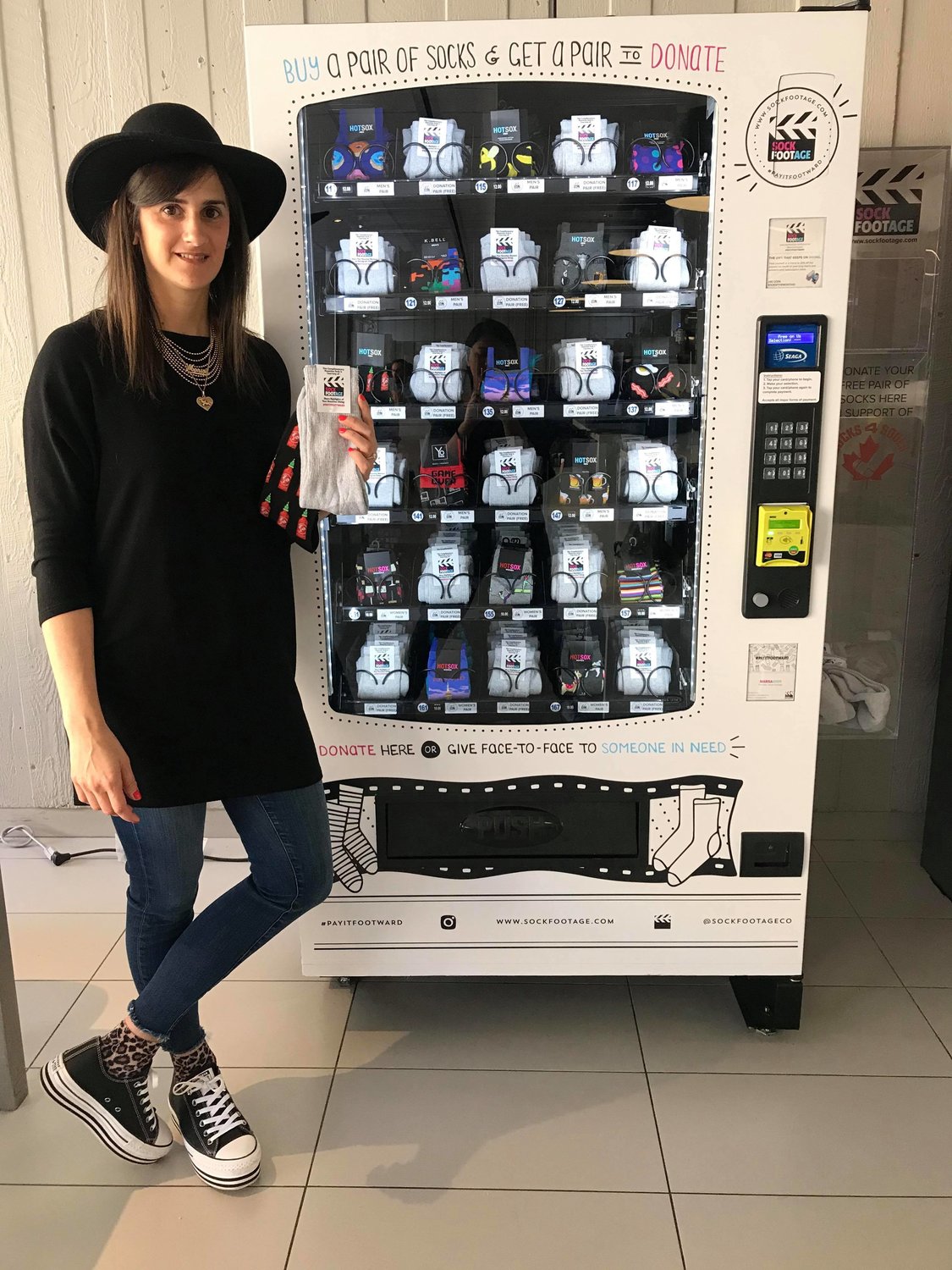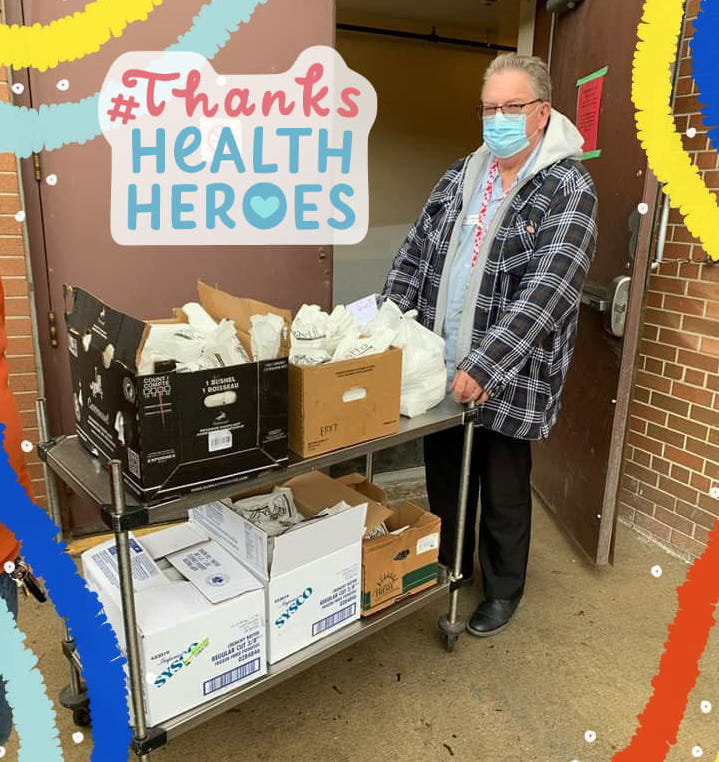Toronto Jews keep traditions going in pandemic
As the rate of new COVID-19 cases very gradually declines in Ontario, Canada’s most populous province, this city’s residents can see the light.
Storefront retailers are preparing to reopen by appointment or with limited capacity. Restrictions prohibiting access to parks — including the coveted cherry blossom blooms — are loosening.
Still, as Prime Minister Justin Trudeau said in one of his recent daily news briefings, “Normal is something that’s a long way off.”
This is true for both the county as a whole as well as Toronto, its largest city, home to 48 percent of Canada’s nearly 400,000 Jews, according to a 2018 Environics Institute survey.
With a ban on gatherings of more than five people in effect, empty streets, shuttered spaces and canceled events have rendered the provincial capital unrecognizable. Residents have been forced to adapt in order to keep their city alive, and that’s exactly what members of Toronto’s vibrant Jewish community are doing.
A bar and bat mitzvah
photographer gets creative
Photographer Elliot Sylman, who specializes in weddings and bar and bat mitzvahs, has been busy for a man with no events to shoot. Last week he photographed 23 families in one day — mostly on their front porches.
Instead of charging $400 per portrait, his usual fee for this type of work, he’s asking customers to donate to Reena, a nonprofit that supports individuals with developmental disabilities within a framework of Jewish culture and values. He calls the initiative Porch Pics.
“There’s no sense in sitting around and not doing something. If you can’t work, you may as well deliver meals or try to raise money,” said Sylman, 53, who typically gets home in time for dinner with his wife and two daughters, then heads straight back to work processing the pictures. He picks his favorite and sends it to the subjects within a day, along with a link to donate.
Despite the Porch Pics moniker, some groups are photographed in cars or on driveways. Sylman uses a zoom lens to capture apartment dwellers on balconies. Some portraits are serious, others are kitschy — pajama-clad folks clutching cleaning supplies or martinis.
“It was nice to get the family together and just smile,” said Elana Gryfe, a teacher for the Toronto District School Board, who participated in Porch Pics with her husband and three kids ages 16, 19 and 22. Gryfe said she plans to frame the photo, which will serve as a snapshot of this “moment in time” — her son’s quarantine beard and all.
“And Elliot’s a really fun, nice person. So that social interaction was good even though he was six feet away,” she added.
Sylman, who’s been a photographer for 34 years, said Porch Pics quickly ballooned from a few friends to over 250 groups, and he has nearly surpassed his $18,000 fundraising goal.
He works with several charities throughout the year, and has photographed over 400 Holocaust survivors, which could be the largest collection of formal portraits of survivors in the world. He said he wants to publish a book soon and, if he can find a sponsor, hopes to photograph hundreds more survivors in Israel once international travel resumes.
Kavod-19: A Jewish Facebook group helps thousands
Facebook has become a hub for Torontonians, connecting those who want to help with those who need it. But, as Zack Babins rapidly realized, “the Jewish community has certain needs that would go overlooked in a massive general group.”
In early March, before the mandatory lockdown, Babins became inspired by a Facebook group called CareMongering-TO, which aimed to share and organize resources. He came up with a pun and formed “Kavod-19: Toronto Jewish Community Response to COVID-19.” Kavod is the Hebrew word for honor and respect.
Babins, 27, said he hoped to hit 1,000 members the next week. He hit 1,000 the next day.
Since then, the group has been used for numerous purposes, such as helping people track down kosher food, socialize with isolated Holocaust survivors, donate supplies and access support systems. One post asks if anyone has a “free standing Chuppah to rent/borrow for a Zoom wedding.” There is a no-tolerance policy for bigotry, ads or disinformation.
Rafi Yablonsky, an administrator who assists with managing the group, said he gets messages daily from people asking how they can help. And Babins said the group has been keeping up his spirits. There are now over 9,000 members representing a cross-section of this city’s Jewish community.
“I invited mostly people in my peer group, which is like a secular Ashkenaz mid-20s range,” said Babins, who grew up in the highly Jewish suburb outside of Toronto called Thornhill, and whose long history of community involvement includes the Alpha Epsilon Pi fraternity and Hillel Ontario.
“But then you could see when people in the Russian community started getting invitations and people in the more observant community — it was very interesting watching that happen. … We came together in a really big way.”
Sock footage
Marisa Sheff offers a different way to donate. Every time someone purchases a pair of novelty socks (think Pac-Man or sriracha sauce graphics) from her company, Sock Footage, they donate a second pair of men’s cotton socks to someone in need.
This isn’t just a stroke of pandemic PR — it’s how her business operates. Sheff, 38, came up with the idea after learning that socks are the most needed but least donated item at homeless shelters.
In addition to its online store, Sock Footage has been piloting one of the first known charitable vending machines in Ryerson University’s Podium Building, which drops two pairs of socks for the price of one and has a donation receptacle beside it. Sheff’s socks have also served as philanthropic loot bags for birthday parties and bar and bat mitzvahs. Since launching, Sock Footage has donated almost 2,500 pairs of socks.
When the coronavirus hit, Sheff’s business stalled: The vending machine stood stagnant behind Ryerson’s closed doors, direct contact with strangers became unthinkable and her partner charity was no longer able to accommodate her donations.
Then she found out that Ve’ahavta, a Jewish humanitarian organization based in Toronto, was still operating its mobile outreach van. With new health and safety precautions, the van is servicing its route six days a week, handing out critical food and supplies to vulnerable people living on the streets. Among the supplies are Sheff’s socks.
Agencies estimate that street homelessness in Toronto has tripled due to social distancing in shelters resulting in fewer beds, and to justified fears of confined spaces. Ve’ahavta outreach worker Kelly Bouchard said he’s “met at least a handful of people who have recently lost their jobs” and wound up on the street.
“There’s a lot of people that are like, ‘What are socks gonna do?’ And I get that. But do something or do nothing,” said Sheff, who worked for a large sock manufacturer for five years before starting her own business. “I can’t change the world. I can only do what I’m good at.”
Moving online hasn’t been without challenges
Shaarei Shomayim, a 90-year-old Modern Orthodox congregation, experienced a “Zoombombing” incident during its nightly prayers on April 19. Rabbi Chaim Strauchler said hackers shouted slurs and streamed pornography as he was about to recite a prayer for front-line workers.
“It was traumatic for everyone who was on the call,” Strauchler said.
Police are investigating the incident as a hate crime.
Since then, Shaarei Shomayim has heightened its cybersecurity, and Strauchler said many Canadians, including members of Parliament, have reached out with well wishes and support.
Participation has increased across the board at the city’s synagogues. Goldstein said that comes with apprehension.
“It’s terrific, but there’s a lot of surfing going on,” the rabbi said. “There are people who in September will say, ‘Why bother rejoining when I can go to all the big names in L.A. and New York for free online?’ … [The alternative:] ‘This is my community. This is my hometown. This is my rabbi, and I want to be there.’ What really is driving people to us? We need to start analyzing that.”

 49.0°,
Fog/Mist
49.0°,
Fog/Mist 







